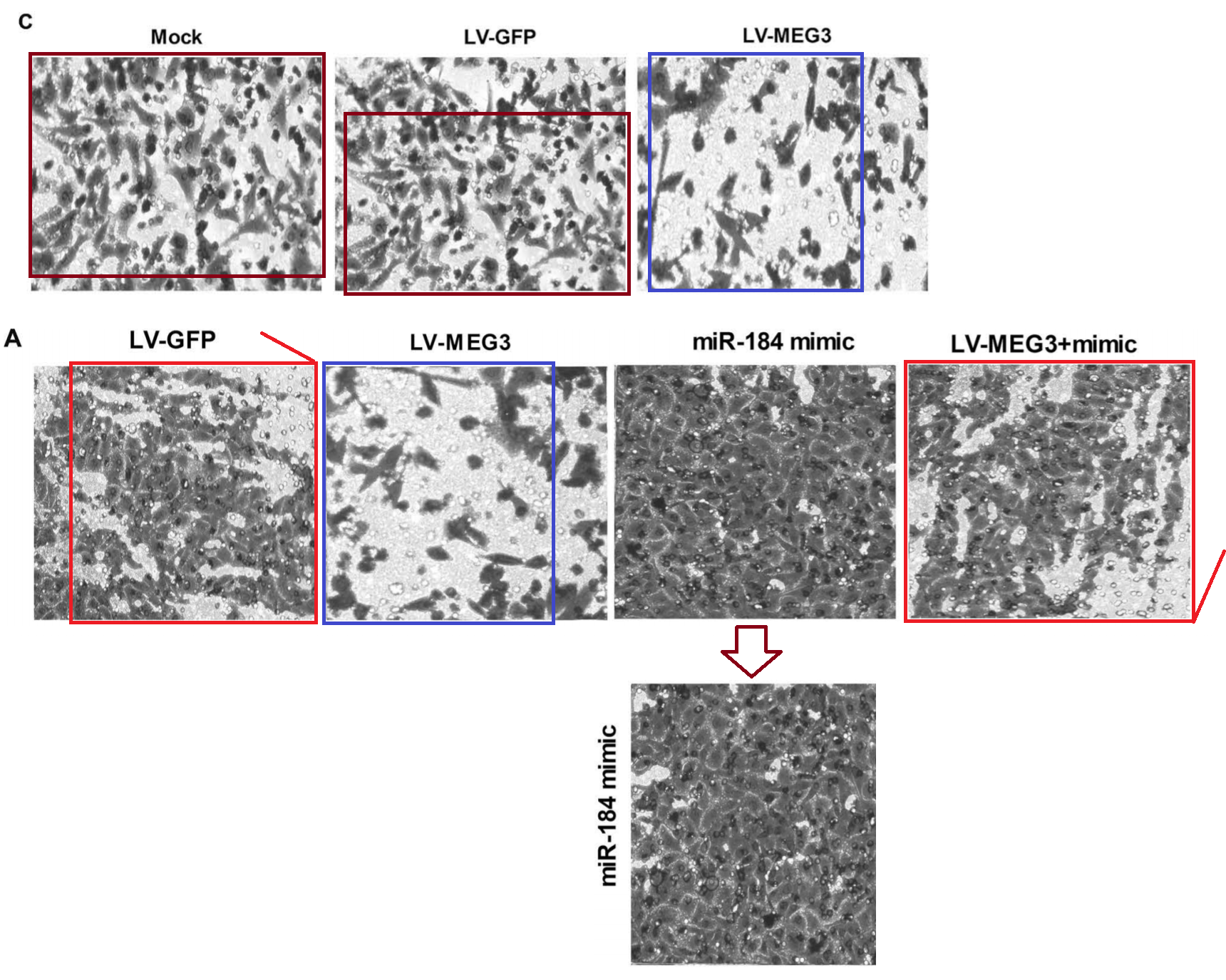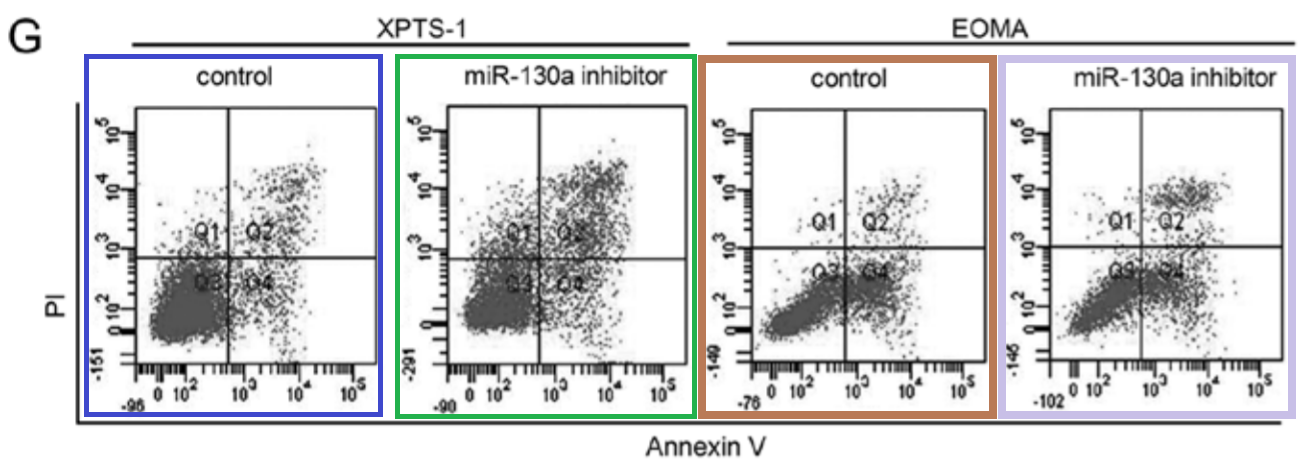This post was earlier cross-posted at Leonid Schneider's site, hence the unfrivolous tone. The version there is improved by Leonid's editing, background details and frame-story.
 We begin today's communiqué with the curious phenomenon of the Travelling Tumors. Not just the plot of a 1936 horror story! Over a dozen teams of Chinese medical clinicians published photographs of excised nude-mouse xenograft tumors to illustrate how different microRNA or long-non-coding-RNA treatments could reduce the malignancy of different carcinoma cell-lines. The tumors were all posed five at a time on the same blue distinctively-creased fabric pad or sheet, with the same plastic ruler for scale. In fact the same tumors featured repeatedly, though rearranged, and rolled to present their different flanks.
We begin today's communiqué with the curious phenomenon of the Travelling Tumors. Not just the plot of a 1936 horror story! Over a dozen teams of Chinese medical clinicians published photographs of excised nude-mouse xenograft tumors to illustrate how different microRNA or long-non-coding-RNA treatments could reduce the malignancy of different carcinoma cell-lines. The tumors were all posed five at a time on the same blue distinctively-creased fabric pad or sheet, with the same plastic ruler for scale. In fact the same tumors featured repeatedly, though rearranged, and rolled to present their different flanks.Curated by PubPeer commenter 'Campanula Pseudostenocodon'




It appears that this small cast of carcinomas went on tour across the breadth and width of China, with their retinue of ruler and creased fabric. Either that, or some unfortunate lab jockey was tasked with excising tumors from even less fortunate mice and shuffling them around on the bench-top in the course of an afternoon photoshoot, documenting each combination for later sale to papermill customers. A few decades ago when I worked in the field of 'vocational psychology', studying how people perceive the range of employment options, I had no idea that one day there would exist the niche of Mouse Malignancy Group Portraitist.




The venue for about half these images was Oncology Research, from Cognizant Communications. This is a small player in the cancer-research-results industry, with papers-per-year numbering in low hundreds rather than thousands. Cognizant identify tourism as a core publishing focus, but at some point in the past they must have seen an unfilled niche for cutting-edge oncology results.
I am not convinced by the suggestion that tumor-tourism is a natural cross-over field:
#2 Actinopolyspora Biskrensis
The original commenter may not be aware that “CCC [the publisher] also covers the growing areas of research in the fields of tourism, travel, and travel locations.”
It is possible that the authors intended the paper to document the travel experiences of these particular tumors, in which case it is understandable that the tumors would prefer to travel with their accustomed bench cover.
The hollowing-out or takeover was probably facilitated by the journal's tripartite peer-review model, in which a triumvirate of regional Editors-in-Chief handle submissions from their separate geographical spheres of influence (Americas, Asia, Europe) and maintain their own region-specific panels of amenable peer-reviewers. There is no sign of any concern from the American or European Eds-in-C about the torrent of cookie-cutter products flooding across the desk of their Asian colleague or its contrast with the emptiness of their own in-trays, so I guess that they (and the publisher) have come to terms with the journal's new role.
Perhaps for legacy reasons, OR has the imprimatur of PubMed indexing so its contents show up in the hits when someone searches PubMed for a given micro-RNA (miR) in the course of establishing the importance and fundability of their own phony-baloney projects. Which is to say, its contents accrue citations. Which is not to say that the citers read the papers. Nor is there evidence that the editors or peer-review rubber-stampers read them, nor the nominal authors, and other than the anonymous studio scriveners who actually wrote them, the audience for most of OR's contents appears to be limited to me.
What commends this obscure, inconsequential journal to our attention is the opportunity it provides to watch the papermills perfecting their templates before exposing their compositions to less sheltered environments. Many of those 63 'tadpole' productions represent early stages in the evolution of that oeuvre. The studio had not yet realised that they could hand-stipple clouds of dots inspired by lutes and embryonic zebrafish and Death Stars shooting planet-buster energy bolts, and the peer-reviewers would just shrug and reach for their No Revision Required stamp, so they were still basing their cytometry scatterplots on real data.
Often the Transwell Assay images are the smoky, smudge-tool-dominated phenomena that first caught the eye of 'Indigofera Tanganyikensis' and started us down this rabbit-hole... while the Western Blots are practically WB-like, reminiscent of rows of toboggans, rather than the flapping tadpoles / zany sardines that later become that studio's trademark motif. Even so, there is enough continuity to justify classifying these early, aberrant images with the rest of the tadpole oeuvre.
The journal is also a chance for the connoisseur to admire the papermills' work in isolation, undiluted and undistracted by any admixture of authenticity. It is so much easier to characterise a distinct style in forgery when the examples are concentrated at one source rather than dispersed across the biomedical literature.
Different ruler photoshopped in
After all that, I can finally return to the travelling tumors. The fabrications they adorn are not confined to Oncology Research as their dumping ground - they have spread out from that first host, and examples can be found in Elsevier journals, and International Journal of Oncology and Onccology Letters and Oncology Reports from the stable of I write "recognising a distinct style in forgery" because the tumors are often accompanied by other forms of recycling, and those other forms co-occur often enough that they clearly come from the same authorship even in the absence of a tumor or two. Perhaps this is how art historians of the Northern Renaissance feel when they recognise the same stylistic quirks in several unsigned altarpiece paintings, and they coin some label like "Master of the Virgo inter Virgines" or "Master of the Day of Judgment" for the anonymous artist.
Western Blots drawn in the manner of processionary caterpillars are not an essential feature of the atelier but they are a frequent one. They were what first brought these instances together in my mind.
The four-quadrant flow-cytometry scatterplots are distinctive. They give every indication of being genuine, and the studio is recycling a limited archive, so if you stumble across one of them then there is a good chance that it will have already appeared elsewhere. Colored boxes added.


I choose to see some as portraits of Thidwick the Big-Hearted Moose, juxtaposed with porcupines.
Another limited resource for the Traveling Tumors atelier is the Invasion assay, requiring "illustrative scenes of cells proliferating on a transwell membrane". The available images have been repurposed so often that they could succumb to bit fatigue at any moment.

 These scatterplots recur: duplicated and hexaplicated, purporting to show that various combinations of miRs and cell-signalling axes and tumor biomarkers are correlated, all with the level of precision that German car engineers can only dream of.
These scatterplots recur: duplicated and hexaplicated, purporting to show that various combinations of miRs and cell-signalling axes and tumor biomarkers are correlated, all with the level of precision that German car engineers can only dream of.They have none of the nonlinearity and noise and clumping of data-points within subranges that one expects from biological processes; I think they came from the lab-book of a first-year physics student, making up the results of an experiment that was neglected in favour of partying. Was it really too much work to draw a new line for each customer and scatter some randomised points above and below it? It's not as if any special commitment to the cause of plausibility went into these constructions, to make them worth repeating.
It is tempting to set up a GoFundMe appeal to help these visually-impoverished dudes. If you have any cell-proliferation scenes or highly-correlated scatterplots, consider donating them to those in greater need. Also, with your financial donations we can buy them a new plastic ruler!














No comments:
Post a Comment